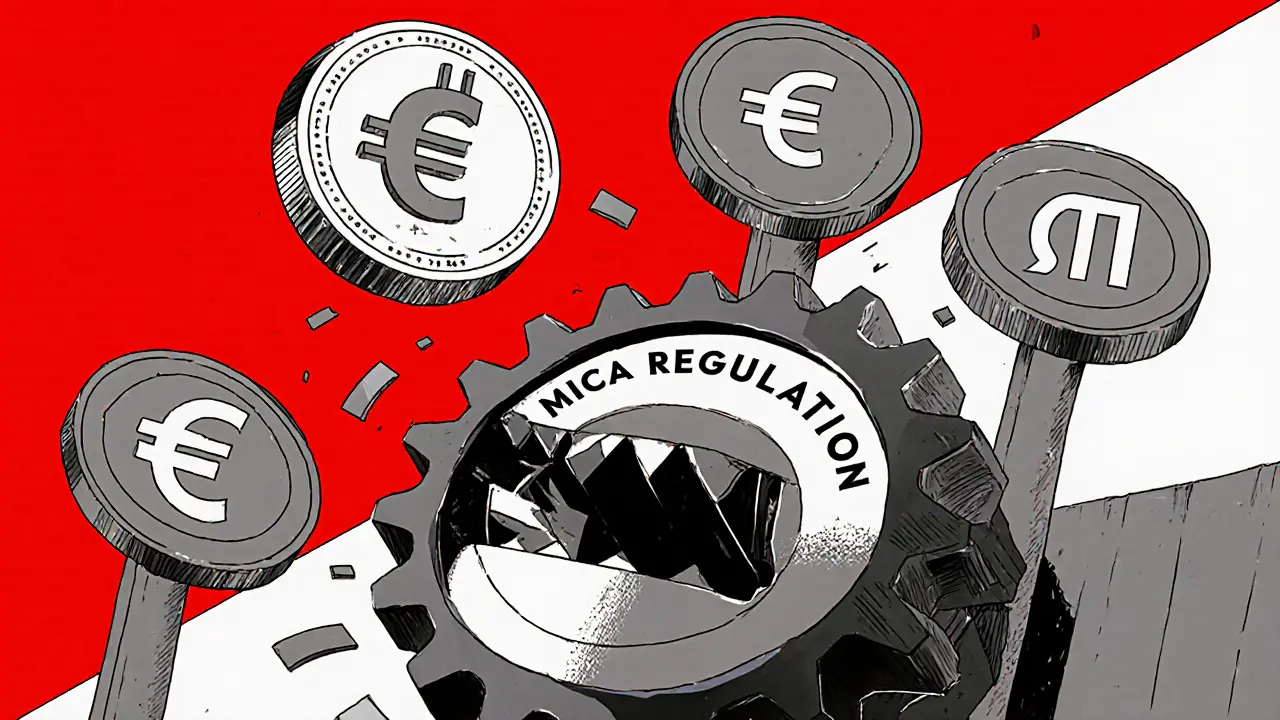
The EU's MiCA regulation banned trading of non-compliant stablecoins like USDT as of early 2025. Learn why USDT doesn't qualify, what stablecoins are now legal, and how this compares to U.S. rules.
When we talk about crypto regulations in Europe, the evolving legal framework that governs how cryptocurrencies are traded, taxed, and issued across EU member states. Also known as European crypto laws, it’s no longer a patchwork of local rules—it’s becoming a unified system with real teeth. The big shift came with MiCA, the Markets in Crypto-Assets Regulation, the first comprehensive EU-wide law for digital assets. This isn’t just paperwork—it’s changing who can operate, how exchanges must protect users, and what tokens are even allowed to exist. Before MiCA, a crypto company could set up shop in Malta for low taxes, then sell to users in Germany without following any clear rules. Now, if you want to list a token or run an exchange in the EU, you need a license, clear documentation, and proof you’re not running a scam.
Crypto exchange Europe, a term describing platforms that serve European users under MiCA’s strict compliance rules. Some, like Exchangeist, built their whole model around transparency and cold storage to meet these standards. Others, like COINBIG or CoinUp.io, are struggling because they never had proper KYC, security audits, or customer support—things MiCA now forces into the open. And it’s not just exchanges. The law also targets stablecoins, DeFi protocols, and even NFTs if they’re sold as investment products. If you’re holding a token that claims to give you profits without a whitepaper or legal team, it might be illegal to market it in the EU after 2025.
Not every country plays by the same rules. Malta Blockchain Island strategy, a proactive national approach to attract crypto firms with zero capital gains tax and clear licensing. It’s still one of the few places where startups can get fast approval and keep operating without fear of sudden crackdowns. Meanwhile, countries like France and the Netherlands are building their own crypto hubs under MiCA’s umbrella, offering grants and legal clarity. But in places like Belgium or Austria, regulators are still suspicious—delisting privacy coins like Monero, demanding full transaction tracing, and treating crypto like a financial risk rather than a new asset class.
What does this mean for you? If you’re trading on a European exchange, you’re probably under more protection than ever. But if you’re chasing airdrops from unregistered projects or using platforms without EU licenses, you’re stepping into a legal gray zone. The posts below show you exactly what’s happening: how Malta’s rules made it a winner, why some exchanges faded after failing compliance, and how regulators are already targeting fake airdrops and scam tokens. You’ll see real cases—like the ZAM TrillioHeirs NFTs that actually delivered utility, versus the dozens of fake ORI or DMC airdrops designed to steal wallets. This isn’t theory. It’s what’s happening right now, and if you’re in Europe, you need to know the difference.

The EU's MiCA regulation banned trading of non-compliant stablecoins like USDT as of early 2025. Learn why USDT doesn't qualify, what stablecoins are now legal, and how this compares to U.S. rules.